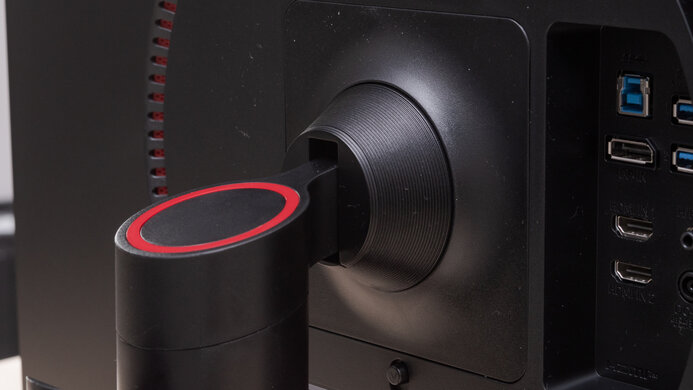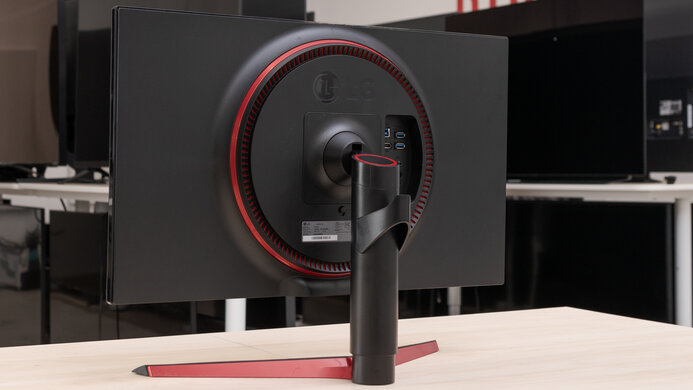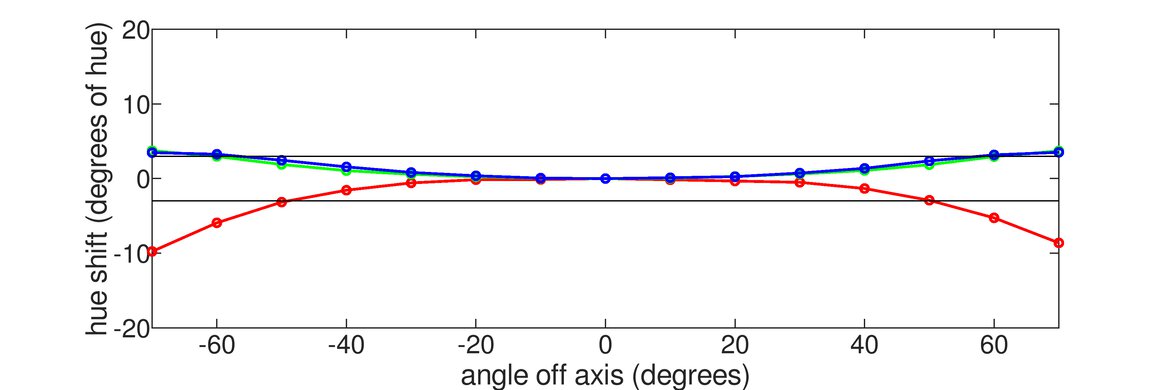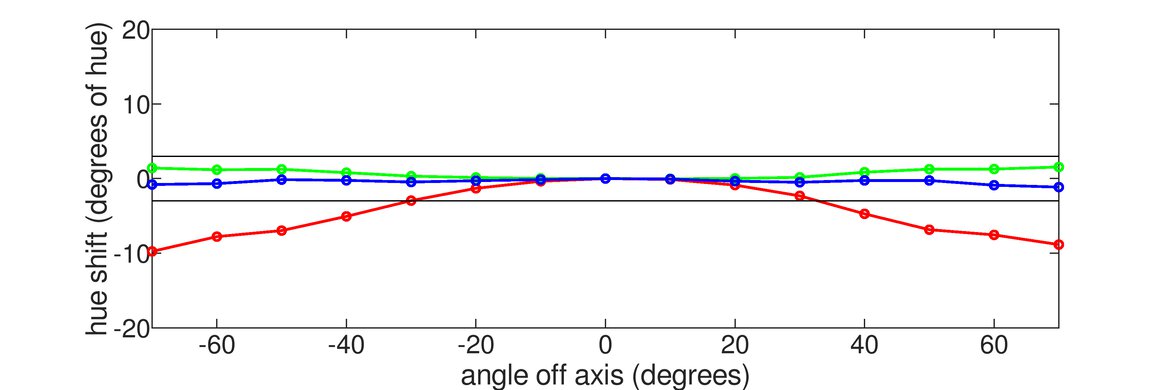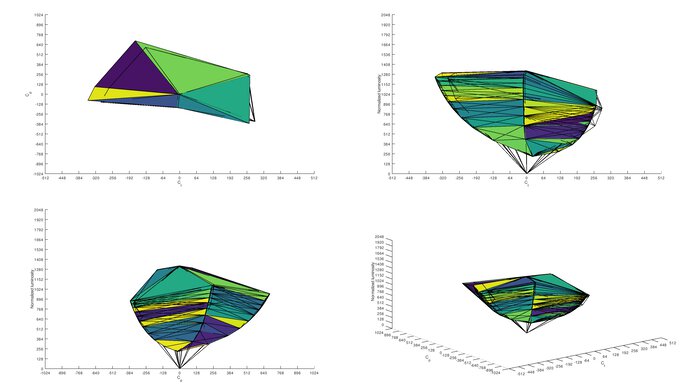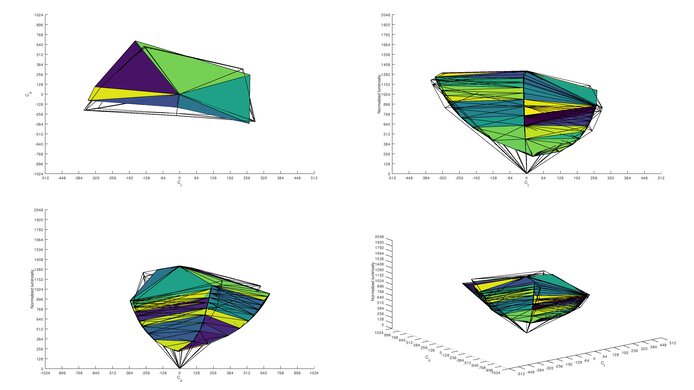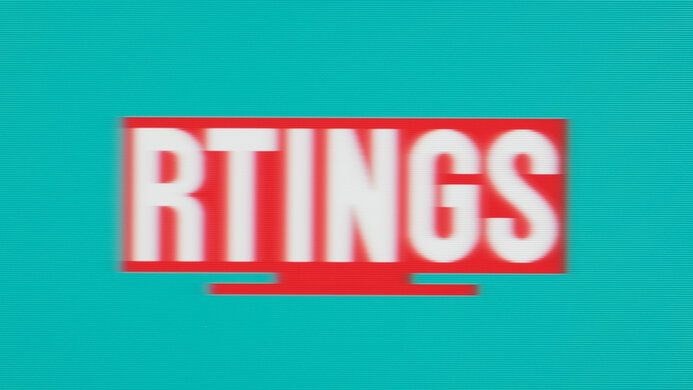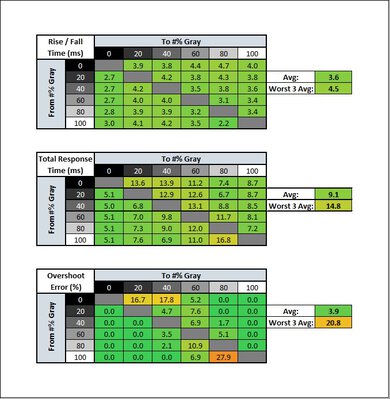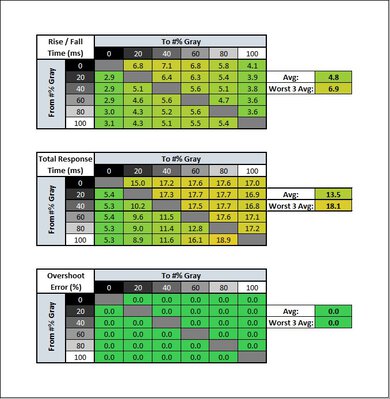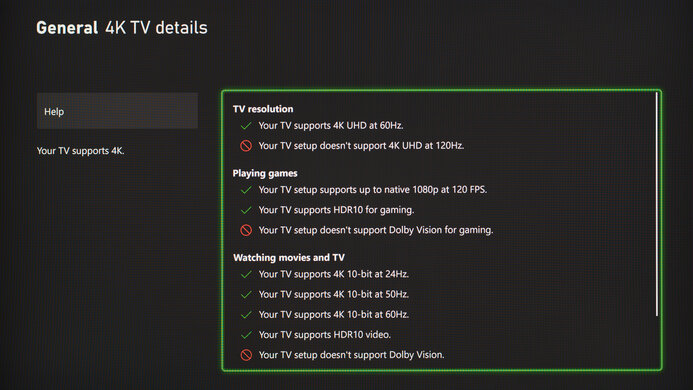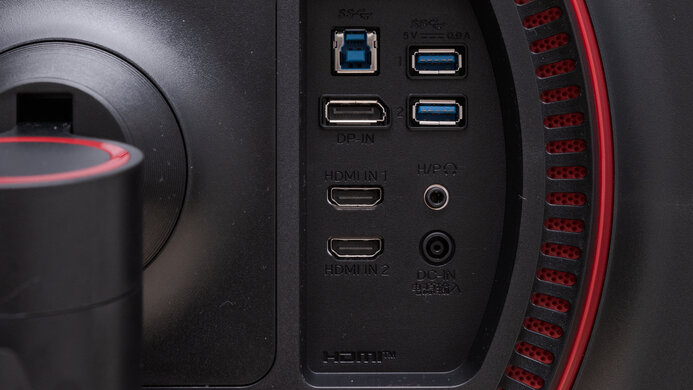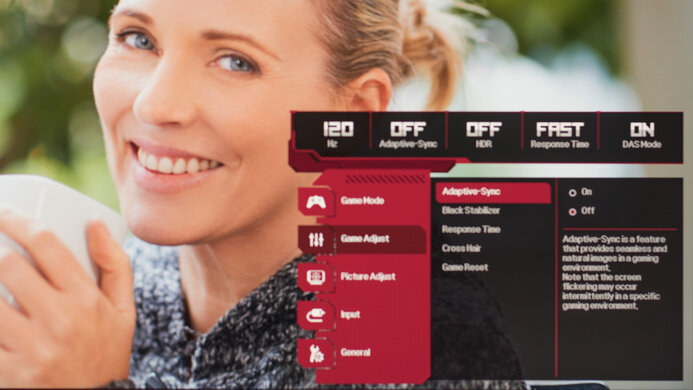The LG 27GN750-B is a 240Hz monitor in LG's UltraGear lineup. It has a 1080p, IPS panel with native FreeSync support, and it's certified by NVIDIA for G-SYNC compatibility too. Motion looks exceptionally clear on this monitor due to its outstanding response time both at its max refresh rate and at 60Hz. The input lag is extremely low, so your actions are registered quickly when gaming. With its IPS panel, it has wide viewing angles, but it has a low contrast ratio, so it's not an ideal choice for dark room viewing. Unfortunately, even though it supports HDR10, it can't display a wide color gamut, so HDR content doesn't look much different from SDR content. This monitor can get bright enough to combat glare and it has good reflection handling, so you won't have any issues placing it in a bright room.
Our Verdict
The LG 27GN750-B is a good monitor for most uses, and it performs best as a gaming monitor. Gamers will appreciate the high refresh rate, outstanding motion handling, extremely low input lag, and FreeSync VRR support. It has wide viewing angles, which makes sharing your screen with coworkers or friends easier, and it performs well in bright environments because of its very good reflection handling. Unfortunately, HDR content on this monitor isn't much different than SDR content since it can't display a wide color gamut or get bright enough to bring out highlights.
- Really high refresh rate.
- Outstanding response time results in clear motion.
- Extremely low input lag.
- Low resolution.
- Disappointing ergonomics.
- Low contrast ratio.
The LG 27GN750-B is a good office monitor. It has wide viewing angles if you need to share your screen with others, it can get bright enough to combat glare, and it has very good reflection handling. Unfortunately, the 1080p resolution might be too limiting for some, but luckily it has excellent gray uniformity, so solid colors across the screen, like on a web page, look great.
- Wide viewing angles.
- Gets bright enough to combat glare.
- Low resolution.
- Disappointing ergonomics.
Impressive gaming monitor. The LG 27GN750-B has a very high 240Hz refresh rate that produces very smooth motion, it supports FreeSync VRR and it's G-SYNC compatible, and the input lag is extremely low. The response time at 60Hz is also amazing, so it's a great choice for console gaming. The 1080p resolution doesn't deliver an immersive gaming experience, but it has wide viewing angles if you want to use it for co-op gaming.
- Really high refresh rate.
- Outstanding response time results in clear motion.
- Extremely low input lag.
- Low contrast ratio.
The LG 27GN750-B is a good choice for watching videos. The 1080p resolution is too low to watch the latest 4k videos online, but it has wide viewing angles if you want to share your screen with some friends. Unfortunately, it's not good for dark room viewing as it has a low contrast ratio and black uniformity isn't the best. However, it performs well in bright rooms as it has great peak brightness and very good reflection handling.
- Wide viewing angles.
- Gets bright enough to combat glare.
- Low resolution.
- Disappointing ergonomics.
The LG 27GN750-B isn't the most ideal for media creation but it's still a good choice. The 1080p resolution is too low if you're editing 4k videos and its stand doesn't allow for a wide range of adjustments. However, it gets bright enough to combat glare, and it has very good reflection if you work in a bright environment. Unfortunately, its gradient handling isn't as good as other 10-bit panels as there's visible banding.
- Wide viewing angles.
- Gets bright enough to combat glare.
- Low resolution.
- Disappointing ergonomics.
The LG 27GN750-B is mediocre for HDR. It has limited HDR performance because it doesn't display a wide range of colors and has low peak brightness in HDR, so highlights don't pop. Also, blacks look gray in the dark, and it lacks a local dimming feature to further improve the contrast.
- Can't display a wide color gamut for HDR content.
- Low contrast ratio.
- Lacks a local dimming feature.
Changelog
- Updated Feb 15, 2023: Added text in the macOS Compatibility and Console Compatibility boxes and clarified text throughout as part of Test Bench 1.2.
- Updated Feb 14, 2023: Updated to Test Bench 1.2, resulting in changes to the results and scores with the Response Time and Input Lag. Added tests for Console Compatibility and macOS compatibility and made minor changes to other tests, which you can see in our Changelog.
- Updated Jun 08, 2020: Review published.
- Updated Jun 04, 2020: Early access published.
Check Price
Differences Between Sizes And Variants
We bought and tested the 27-inch LG 27GN750-B, which is the only size available for this model. It's a newer version of the LG 27GK750F-B, and you can see the differences between them below.
| Model | Size | Panel Type | Resolution | Refresh Rate | Variable Refresh Rate |
| 27GK750F-B | 27" | TN | 1080p | 240Hz | FreeSync, NVIDIA Certified |
| 27GN750-B | 27" | IPS | 1080p | 240Hz | FreeSync, NVIDIA Certified |
The unit we reviewed was manufactured in March 2020, and you can see the label here.
Popular Monitor Comparisons
The LG 27GN750-B is an impressive gaming monitor, but it doesn't match up to other 240Hz monitors in terms of overall picture quality. Also see our recommendations for the best gaming monitors, the best 240Hz monitors, and best 1080p monitors.
The LG 27GN950-B is better overall than the LG 27GN750-B. The 27GN950-B is a 4k monitor with a slightly quicker response time, a wide color gamut for HDR content, and it gets brighter. On the other hand, the 27GN750-B is a 1080p monitor with a much higher 240Hz refresh rate, slightly lower input lag, and it has better reflection handling.
The LG 27GN750-B is better than the BenQ ZOWIE XL2546K for most uses. The LG has a bigger screen, much wider viewing angles, higher peak brightness, and HDR support. However, the BenQ has better ergonomics and a Black Frame Insertion feature.
The LG 27GN750-B and the Dell Alienware AW25212HF are similar monitors overall, but the Dell is slightly better for gaming. The Dell has a better response time both at its max refresh rate and at 60Hz, it handles reflections better, and its ergonomics are better. The LG is bigger and it supports HDR10, although content in that mode doesn't look much different from SDR.
The Acer Nitro XV273 Xbmiiprzx is a better monitor than the LG 27GN750-B. It has better ergonomics, much better out-of-the-box color accuracy, better gradient handling, and a black frame insertion feature to help reduce motion blur. The LG has better reflection handling, and it has a slightly lower input lag when playing at 60Hz.

We buy and test more than 30 monitors each year, with units that we buy completely on our own, without any cherry-picked units or samples. We put a lot into each unbiased, straight-to-the-point review, and there's a whole process from purchasing to publishing, involving multiple teams and people. We do more than just use the monitor for a week; we use specialized and custom tools to measure various aspects with objective data-based results. We also consider multiple factors before making any recommendations, including the monitor's cost, its performance against the competition, and whether or not it's easy to find.
Test Results

The ergonomics are decent. It can rotate into portrait mode, but only clockwise, so the inputs are on top when it's in portrait mode. It's a bit unfortunate if you have short cables.
The red ring on the back can't be illuminated like the LG 32GK850G-B. There's a quick-release button, and there's a clip on the stand for cable management.
The 27GN750 doesn't have a local dimming feature. The above video is provided for reference only.
Great peak brightness. It gets bright enough to combat glare and it remains very consistent across different content. It's slightly less bright than the LG 27GL650F-B.
The HDR peak brightness is just okay. On 'Gamer 1' Picture Mode, it gets decently bright but not enough to make highlights pop in HDR. Also, the EOTF has a sharp cut-off at the peak brightness, causing a loss of fine details with bright scenes.
As is the case with most IPS monitors, the 27GN750-B has a great horizontal viewing angle. The image remains accurate when viewed from the side, which is ideal for co-op gaming.
The 27GN750 has a passable vertical viewing angle. The edges of the screen may appear darker if you sit too close and you lose some image accuracy if it's mounted above eye level. This isn't as good as the LG 34GN850-B.
Black uniformity isn't bad for an IPS monitor. Despite the visible clouding and some backlight bleed, it's much better than the Dell Alienware AW2720HF, which is another 240Hz monitor.
The LG 27GN750 has decent accuracy before calibration. Most colors and shades of gray are only a bit inaccurate, and the color temperature is very close to the 6500K target. Gamma does an okay job at following the curve, but most scenes aren't displayed at their correct peak brightness.
The LG 27GN750-B has remarkable color accuracy after calibration. There are almost no inaccuracies with most colors, and the color temperature is at the target. However, the gamma isn't perfect and dark scenes aren't as dark as they should be.
The 27GN750-B has an excellent SDR color gamut. It covers nearly all of the sRGB color space used in most content and it has good coverage of the wider Adobe RGB color space, although it might not be enough for professional photo editors.
Excellent gradient handling, but not as good as other 10-bit panels like the LG 27GL650F-B. There's some banding in the darker shades.
You can reach this monitor's max refresh rate with 8-bit displays, as the refresh rate is limited to 144Hz when using a 10-bit signal, like in HDR.
The LG 27GN750-B supports FreeSync VRR, and NVIDIA certifies it as G-SYNC compatible. However, VRR doesn't work properly over HDMI because the screen keeps flickering when enabled, so you need a DisplayPort connection.
| Overdrive Setting | Response Time Chart | Response Time Tables | Motion Blur Photo |
| Off | Chart | Table | Photo |
| Normal | Chart | Table | Photo |
| Fast | Chart | Table | Photo |
| Faster | Chart | Table | Photo |
The LG 27GN750-B has an incredible response time. Motion looks clear, and the best Response Time setting is 'Fast'. Setting it to 'Fastest' has significant overshoot and causes visible artifacts.
| Overdrive Setting | Response Time Chart | Response Time Tables | Motion Blur Photo |
| Off | Chart | Table | Photo |
| Normal | Chart | Table | Photo |
| Fast | Chart | Table | Photo |
| Faster | Chart | Table | Photo |
The response time at 120Hz is excellent. The 'Normal' overdrive setting is better than 'Fast' here because it has a faster total response time with less overshoot. It means that you may have to change the overdrive setting if the frame rate of your game drops or if you change sources.
| Overdrive Setting | Response Time Chart | Response Time Tables | Motion Blur Photo |
| Off | Chart | Table | Photo |
| Normal | Chart | Table | Photo |
| Fast | Chart | Table | Photo |
| Faster | Chart | Table | Photo |
The 27GN750 has a good response time at 60Hz. There's only a bit of motion blur with fast-moving objects, which is great news for console gamers. It's recommended to leave the Response Time setting to 'Off', as there's overshoot on the other settings. It's a much better response time than the Dell Alienware AW2720HF.
Unfortunately, the 27GN750 doesn't have a black frame insertion feature to help reduce motion blur.
The 27GN750 has an extremely low input lag for a responsive feel while gaming.
The 1080p resolution might be too low for some who want to watch videos or use it for media creation. If that's the case, check out the 1440p LG 27GN850-B/27GN880-B.
The LG 27GN750-B works well with the PS5. It supports 1080p signals without issue and downscales a 4k image, resulting in a sharper image than a native 1080p signal. However, it can't downscale a 1440p image.
The LG 27GN750-B works well with the Xbox Series X. It supports 1080p signals without issue and downscales a 4k image, resulting in a sharper image than a native 1080p signal. However, it can't downscale a 1440p image.
The LG 27GN750-B doesn't have any major issues with macOS. VRR works fine up to 240Hz, and there isn't any flickering. However, colors in HDR can look washed out, particularly in the desktop. If you're using a MacBook, windows return to their original position when you wake it up from sleep but not when reopening the lid, which is a common problem when using a DisplayPort to USB-C adapter.
There aren't many extra features available on this monitor. You can add a virtual crosshair for FPS games and there's a 'Black Stabilizer' features that adjusts the gamma so that it's easier to spot opponents in shadows while gaming.



